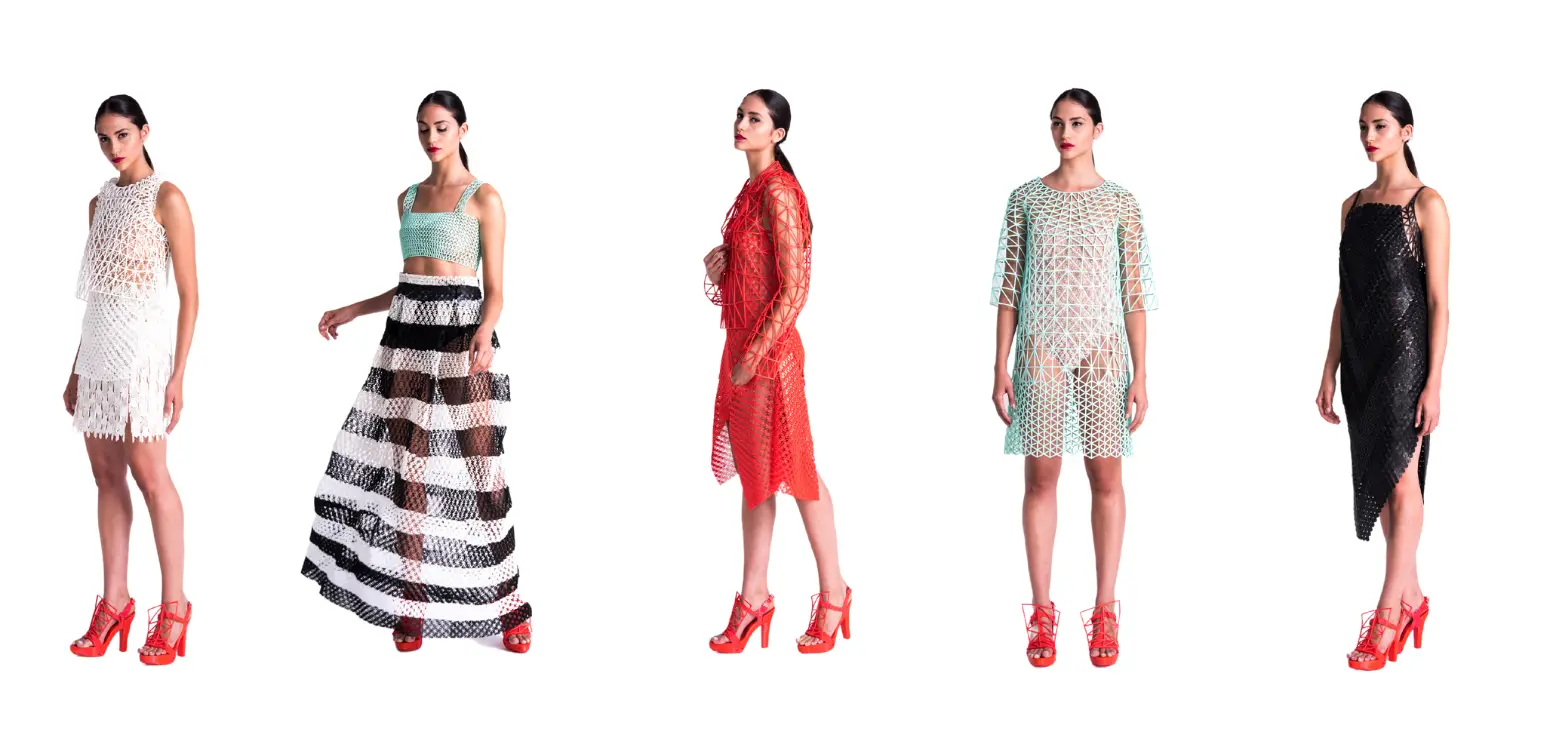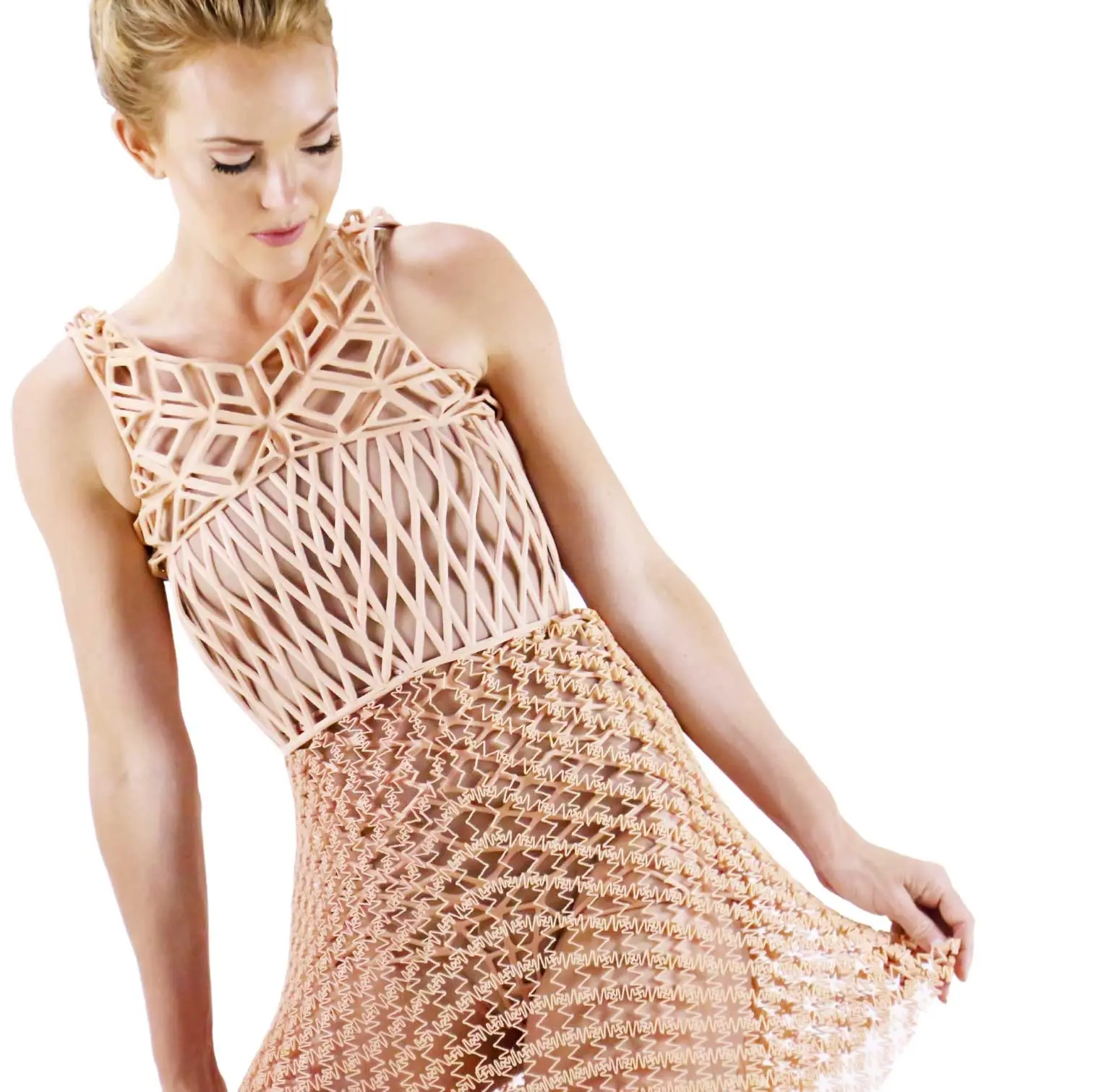Are 3D printed garments the future of the fashion industry?
I travel light. A large handbag into which my laptop, toiletries, makeup and a few other personal effects are thrown, is carried comfortably on my shoulders. Suitcases have long since being abandoned. As I confidently saunter through the airport terminal on the way to my next destination, I pull my purse protectively towards me, subconsciously cradling my precious laptop. Glancing down at my phone, I made a quick scan of print shops close to my hotel, already bookmarked for easy reference on my arrival. A chuckle escapes my lips, followed by a more confident stride. I’m good. The wardrobe saved in a file on my laptop will be printed quite easily. My thoughts quickly strayed to Israel and the person who made suitcase-free travel possible. Danit Peleg lingers appreciatively in my thoughts. She was the first person to create a 3D printed garment from her home – just amazing! Now, I travel light. Smiling smugly to myself, I continue along.
This may soon be a commonplace scenario in many countries of the world, as 3D printing in the fashion industry gains popularity. This emerging trend is being embraced by fashion designers around the world, and pre-pandemic, 3D printed collections were seen on runways during Fashion Weeks. This type of clothing may not be the choice of everyone, but environmentalists are watching closely with the hope that sustainability will supersede and the majority of clothing produced will be done with protection of the environment in mind. 3D printed clothing produces zero waste.
Six years ago, emerging fashion designer, Danit Peleg, introduced 3D printed garments to the world from designs created on a computer, then printed on a 3D desktop printer in her home. Interest was awakened world-wide and in 2016, American Paralympian, Amy Purdy wore a custom-made 3D printed dress at the Paralympic Games during her dance performance. The dress was designed and printed by Danit. Indeed, this concept was revolutionary, with implications going beyond the mere convenience of not having a wardrobe overflowing with clothes. Clothing can all reside on a flash drive or on a file on your computer. Using specialized software, garments can be designed on a computer, printed, worn, then the material can be recycled and reused for the next outfit. With 3D printers becoming more affordable for use at home and available in libraires and community print shops, this is one small way we can all do our part to help save the environment.


After her debut on the fashion world stage, one of Danit’s first partnerships in 2016 was with Gerber Technology, based in Connecticut, USA, a company that produces technology used by the fashion industry. She collaborated with them to improve the software, Accumark 3D used by fashion designers in the 3D printing process.
Danit pursues collaborations centered around: creating better software to allow for more designers to join the 3D fashion revolution; creating better technology that will improve on the clothing printing time; creating better filament and a wider variety, for printing. One of her more recent collaborations is with Moon Creative Labs in Palo Alto, California, where they are working together to create more wearable filament with a fabric-feel that is both printable and 100% recyclable. Her first garments were made with Filaflex, a flexible filament for 3D printers, which, although soft, is not exactly suitable for everyday wear. Her soon to be released filament will bring fashion designers one step closer to printing clothing that can be worn on a daily basis.

In an attempt to ensure 3D fashion printing does not lose momentum, Danit has developed her own online course, teaching students how to embark on their own 3D fashion design journey. She hopes to have more people learn about it as the digital age has opened the door to incredible opportunities for young designers. With this democratization of fashion, they can easily upload their designs online and potentially go viral as the entire digital world will now be their audience.
The 3D design and print process does not have a steep learning curve. Using Accumark 3D, the garment’s pattern is designed for dress, jacket, etc. – any pattern can be accommodated. The pattern, in pdf format is dragged into the software, Blender, in which the 3D modeling design takes place. Here, the density of the fabric, its structure etc., can be decided. You will be limited only by your imagination, however complex. When complete, you print, then assemble. Or, the file can be emailed to your client. This process is completely digital from the first step to the last.
Danit constantly promotes the sustainability features of 3D garment production. Garments are recyclable and provide a sustainable alternative to what is currently being used by the fashion industry. With 3D, there is no inventory, zero waste and no shipping costs. Over 15% of textile is wasted as fabric is cut to make an outfit. It all ends up in the landfill. With 3D, there are no leftovers. What you see on the computer screen is what will be printed. No cutting and no waste. When you have no more use for a 3D outfit, it can be fed into a small, desktop recycling machine that will crush it into powder which you can use to produce more filament to make new clothing. Pigment and dies can be added to the filament to get desired colours. Highlighting the circular 3D Digital fashion model that has been created, Danit encourages designers to “download digital file, print, wear, recycle, produce new filament, repeat the process.”
Danit Peleg does not own a clothing store nor does she take orders for outfits. Working out of her studio in Tel Aviv, she is focused on research and development to find better 3D garment print solutions. She seeks out creative collaborations, consults and is often sought for speaking engagements on matters relating to her industry. Danit views her role as being that of an educator, preparing the next generation for the 3D fashion printing wave that will revolutionize the garment industry.
“I’m finding more alternatives to the way clothing is aproduced today,” she said, “and the next generation will be a huge part of what is now evolving.”
The files of her first 3D fashion collection are now available as digital assets – Non-Fungible Tokens (NFTs) – bought with cryptocurrency. As collector’s items, buyers will own the original files.

Danit Peleg
Website: www.danitpeleg.com
Instagram: @danitpeleg3d
Twitter: @danitpeleg3d
LinkedIn: Danit Peleg
Facebook: @danitpelegdesign
